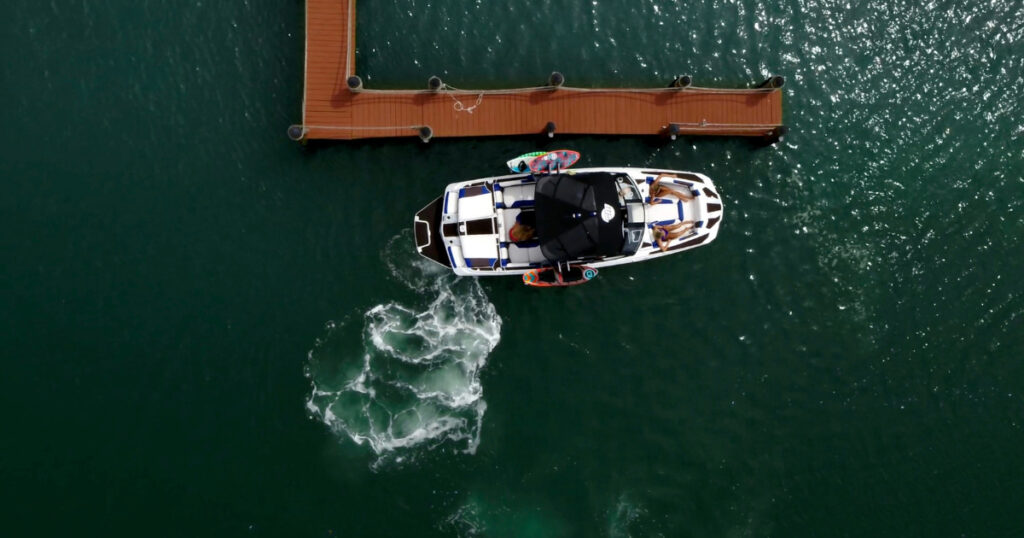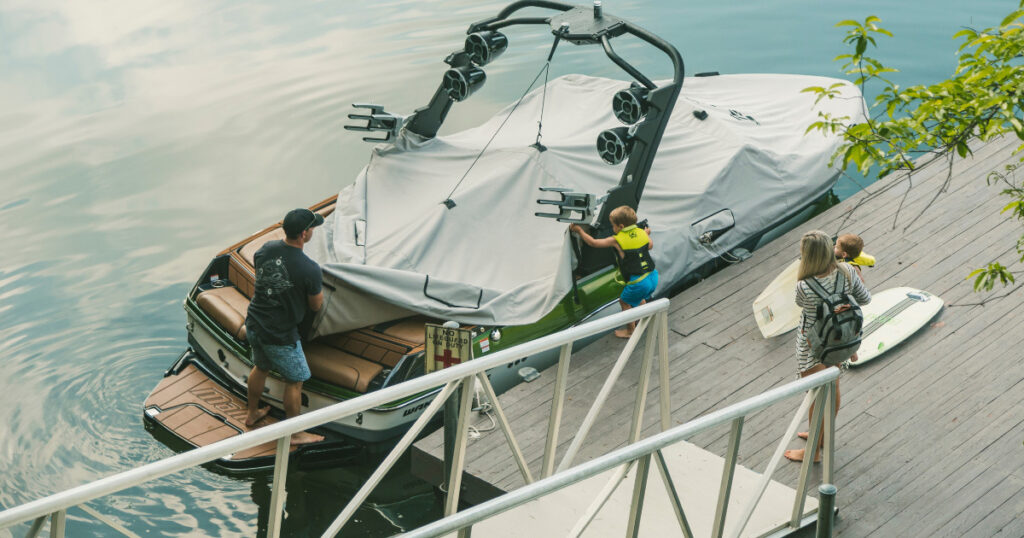Winterizing your boat is an important step to ensure it stays in good condition during the off-season. Not only safeguarding your investment, but it also simplifies launching your boat come spring.
The process of winterizing a boat varies depending on the type of boat and location. The following steps will give you a general idea of what needs to be done.
Preparing for winterization
The first step in winterizing your boat is to remove any personal items from the vessel. This includes clothes, food, and any other items that may freeze or attract pests.
Additionally, it is important to remove any electronics such as radios or speakers and store them in a safe place.
Next, give your boat a thorough cleaning. Clean the deck and seats with a mild detergent and water, as well as cleaning the windows and mirrors.
Also, make sure to flush the bilge area and clean it with a mild detergent and water. This helps to remove any dirt or debris that may have built up in the bilge.
Before winterizing your boat, you should also check for any necessary repairs. Any issues should be addressed before storing the boat to prevent further freeze damage during the winter months. Checking the hull for leaks, cracks, and other damage, and inspecting the steering, throttle, and other mechanical systems for wear.

Winterizing Your Boat: Engine and Fuel System
One of the most important steps in winterizing your boat is to properly prepare the engine block and fuel system. This includes draining the fuel tank and adding fuel stabilizer. The fuel stabilizer keeps the fuel fresh and prevents it from breaking down and forming harmful gums and varnishes.
To drain the fuel tank, turn off the fuel valves and use a garden hose to siphon out the fuel. Once the tank is empty, you can add the fuel stabilizer according to the manufacturer’s instructions.
Changing the engine oil and filter, and running the engine briefly, is essential. The oil and filter should be changed to ensure that the engine is lubricated and protected during the winter months. After changing the oil, run the engine for a few minutes to spread the stabilizer around evenly.
For boats with stern drive or outboard engines, take out the drain plugs from the engine and let all the water drain completely. This will prevent damage from freezing water in the cooling system.
Additionally, it is important to flush the cooling system with fresh water to remove any debris or salt. Flush the system from the seacock (located on the transom) using a garden hose.
Lastly, you’ll want to remove the battery and store it in a dry place. The battery should be stored in a place where it will not freeze. Additionally, make sure to disconnect the battery terminals to prevent any damage or leakage.
Water System
To winterize your boat’s water system, you’ll need to drain the water tanks and lines, and add antifreeze to the system. This will protect against water freezing, bacteria growth, and other organisms. To drain the water tanks, turn off the water pump and open the faucets to allow the water to flow out. Once the tanks are empty, close the faucets and add the antifreeze according to the manufacturer’s instructions.
Winterize the toilets by removing the intake hose from the seacock and flushing the system with fresh water and antifreeze. This will clear out any dirt or pollutants that have built up, and stop freezing water from causing harm.
Additionally, it is important to make sure that the seacock is closed and locked to prevent water from entering the system.

Electrical System
Before storing your boat for the winter, you should also prepare the electrical system. This includes removing and storing electronics, disconnecting the battery, and checking for any corrosion. When storing electronics, it is important to make sure they are clean, dry, and protected from extreme temperatures.
Additionally, it is important to disconnect the battery terminals to prevent any damage or leakage. Corrosion can be a major issue for the electrical system, check all of the terminals and connections for rust. Clean any corrosion with a wire brush or sandpaper and apply a coat of marine-grade prevent corrosion inhibitor.
Exterior
To protect your boat’s exterior during the winter months, it’s a good idea to apply a protective coating to the hull. This can include a coat of wax or a specialized marine protectant. This will help to protect the boat’s finish from the elements and prevent any damage from sun, salt, or UV rays.
The next step is to cover your boat or shrink-wrap your boat. This will protect it from the elements and prevent any damage from snow or ice. When choosing a cover, select one that is durable, water-resistant, and that is the right size for your boat.
Additionally, make sure to secure the cover with straps or tie-downs to prevent it from blowing away. Shrink wrap is another good option as it protects the boat from the elements and keeps it dry.
Winterizing Your Boat
Lastly, make sure to store your boat in a covered or indoor area. This will help to protect it from the elements and prevent any damage from sun, wind, or water. Additionally, make sure to store the boat on a dry, level surface to prevent any warping or cracking.
In conclusion, winterizing your boat is an important step to ensure it stays in good condition during the off-season. It will protect your boat from freezing and make it faster to launch in spring.
Check your boat often in winter and cover it to keep it dry. Consult your owner’s manual or a professional for specific instructions.
Following these steps will ensure that your boat is ready for next season and you can hit the water with confidence.
Whether it’s Malibu, Southbay, Axis, Cobalt, or Boston Whaler, Valley Marine is ready to help get your boat in top-notch shape today. Need some help with your boat service? Contact Valley Marine’s award-winning team of marine technicians for in-shop or on-location boat service today!
